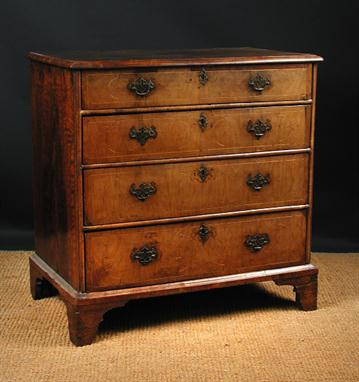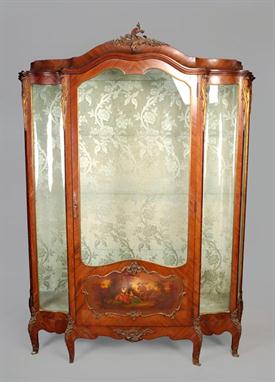We found 360412 price guide item(s) matching your search
There are 360412 lots that match your search criteria. Subscribe now to get instant access to the full price guide service.
Click here to subscribe- List
- Grid
-
360412 item(s)/page
Tuscan School (circa 1600) Design for a Painting of the Crucifixion, pen and ink, heightened with white, 20 x 12cm (7.80 x 4.68in). Provenance: The Hon Robert Gathorne-Hardy (1902-1973) Thence by family descent, The style indicates a Tuscan, very likely Sienese, hand as is shown by the extensive use of white heightening. The composition, which combines elements of the influence of Michelangelo and Raphael, is somewhat in the taste of the Zuccaro brothers, however the handling of the drawing remains between competent and routine. Of interest is the suggestion of a frame surrounding the design, with indications of two capitals to either side, supporting the frame from beneath; this perhaps shows that the picture may not have been destined for an altar but as a panel in a sequence of decorations in an upper register of a painted chapel, We are grateful to Nicholas Turner for his help with the catalogue entry
English School (17th Century) Portrait of Dr John Gordon, Dean of Salisbury, DD (1544-1619) inscribed upper right "Anno aetatis `65 - Me Sophiam, et Linguas docuit: per Lustra Quaterna Scotia; doctiloquis Inclyta terra Viris; Hinc Septem Lustris: Fausta me Gallia sorte, Sub Regum tectis auxit honore trium", oil on oak panel, 80 x 65cm (31.20 x 25.35in). Provenance: The Paget family, Norfolk, thence by descent, Latin Inscription: "He taught me wisdom and languages: through 20 Scottish years; with men who spoke learnedly in that glorious land; for 35 years from that point on: by auspicious Gallic lot under the roof of the Kings he increased me threefold in honour (65 years of age) The King sowed me as a land henceforth nourishing for others. He lightened... increasing my wealth. Let Faith offer a passage in the future in order that I may be a shepherd just as Christ was to my ancestor; faith give such things to a good man who has been stirred", Dr John Gordon, Dean of Salisbury, was the son of Alexander Gordon (1516-1575), Bishop of Galloway. John Gordon was a fervent Protestant and a studious man who pursued an education both at home and abroad. Mary, Queen of Scots granted him a yearly pension to study in France, and so he spent two years at the universities of Paris and Orleans, and became a gifted linguist. He served many notable leaders during his lifetime, including Thomas, Duke of Norfolk, Mary, Queen of Scots, Charles IX, Henry III and Henry IV of France. Gordon`s achievements include Protestant literature publications, preaching at Court, and the supervision of eighty parishes. He died in Dorset, aged seventy-five, leaving his books to the Salisbury Cathedral Library, and a legacy for rebuilding the Cloisters
Jacob Xavery (Dutch, 1736-1771) Herdsmen with Cattle in a Landscape, signed lower right "J Xavier", oil on panel, 28 x 35cm (10.92 x 13.65in). Provenance: Acquired in the 1880s by Dr Edward Sidebotham of Bowdon, Cheshire, thence by descent, Jacob Xavery was the son of Jan Baptist Xavery, the sculptor, and the pupil of Jacob de Wit (Dutch, 1695-1754). He practised at Amsterdam, Breda, and The Hague, and passed some time in Paris. Occasionally he imitated the manner of Berchem in his landscapes, and approached closely to his master, Jacob de Wit, in his feigned bas reliefs. He painted portraits of several distinguished people, among them Braamcamp and the sculptor, Charles Cressent (French, 1685-1768). He died towards the end of the 18th Century. In the South Kensington Museum there is a Vase of Fruit and a Vine Branch by him
English School (17th-18th Century) Portrait of Mary, Queen of Scots, wearing a Headdress of Pearls with a Red Rose and a Thistle, oil on oak panel, 27 x 24cm (10.53 x 9.36in). Provenance: From an Irish country house, This historical portrait of the Scottish Queen is interesting in that the inclusion of the Red Rose of Lancaster in the Queen`s headdress may be a hidden allusion to her claim to the Tudor throne
James Condliff Liverpool, an early Victorian carved mahogany drop dial wall clock, the 12 inch enamelled dial with 5 pillar twin fusee movement striking on a gong, having shaped pierced hands and glazed panel below, 56cm high. James Condliff was a well known maker of precision skeleton clocks
A William and Mary figured walnut cabinet on stand, circa 1690, the cabinet with blind frieze cushion drawer, with a fitted interior of eleven drawers and central cupboard enclosed by two panel doors above two further drawers to the stand with six s-scroll brackets an undertier and on bun feet. 186 x 111 x 58cm (72 x 43 x 22in). Provenance: This cabinet was sold at auction on Tuesday, June 18th 1889 by Mr Robert Buckell, 2 Broad Street, Oxford. The catalogue entry reads; `Lot 122. Handsome antique pollard oak cabinet, with folding doors, finely inlaid, interior containing eleven drawers, cupboard, secret drawers, two long drawers under, formerly belonged to John Milton`. Two letters survive dated 1896 from the vendor of the cabinet, a J Wentworth Day of the Abingdon Agency of the Lancashire Insurance Company, stating that this cabinet was bought by him some twenty years before, from a gentleman who assured him that it was from a descendant of the Milton family and a letter from the Auctioneer Mr Robert Buckell, We note the discrepancy between the descriptions of timber, which is not unusual in old catalogue listings and the date of this piece, which would place it after Milton had died in 1674, however the letter from the vendor suggests that it was purchased from a descendant of Milton, which could imply, given the location of the auction, that it might possibly have come from the Milton`s former country home in Horton, Buckinghamshire. Letters and catalogue listing are included in this sale
A carved walnut relief panel portraying a saint, second half 17th century, carved in high relief, the head in the round, the draped figure with a quill in his right hand, standing on a projecting plinth in a niche with scallop-shell arch, with winged cherub heads to the spandrels, 63cm high, 26cm wide, (damage, worming, losses); and two further carved walnut relief panels, first half sixteenth century, one with a double-headed spreadeagle, the other with grotesques, both previously front panels from coffers
Of Royal interest, a George IV mahogany washstand, circa 1825, the hinged top opening to a fitted interior containing a quantity of Masons Ironstone pottery wash accessories, above a pair of cupboards opening to three drawers above a divided open space, on a plinth base, the rear panel stamped ‘VR 1866, Windsor Castle, Room 546’ above a crown, 93cm high, 76.5cm wide, 56cm deep
A French gilt metal mounted mahogany and vernis martin vitrine, late 19th century, of serpentine outline, cast metal floral cresting, above moulding cornice, central glazed doors flanked by two further glazed panels, above vernis martin panel, on gilt metal mounted legs and sabots, 216cm high, 165cm wide, 50cm deep
Ellen Mary Rope (1855-1934): A 19th century plaster plaque, `Adoration`, modelled with six children offering flowers to the infant Christ, in a stained oak frame, no signature in the plaster but named and signed on a paper label verso, plaque 26 x 32ins, overall 34 x 40.5insBorn in Blaxhall in Suffolk in 1855 Ellen initially studied painting at the Ipswich School of Art before progressing to The Slade School at University College London, where she became interested in sculpture. During her career she specialised in, and became known for, her sculpture and bass reliefs. The example here is a direct copy of the central panel of a triptych, recently restored, at the Royal Shrewsbury Hospital. Rope completed this composition in memory of her brother Henry John Rope, who was a doctor at the hospital.
A mid 19th century French kingwood and parcel ebonised poudreuse, ormolu mounted, the hinged top decorated marquetry panel depicting Japanese figures amongst stylised garden setting and enclosing a mirrored compartmentalised interior, on tapered fluted legs united by shaped stretchers on toupee feet, H.2ft 4ins W.1ft 8ins
EARLY 19TH CENTURY WELSH OAK DOG KENNEL DRESSER, having open two shelf rack under angled cornice, the base with three moulded edge freize drawers above two blind panel cupboards, all with turned knobs and flanking centre arch dog kennel standing on bracket feet. 58" Wide x 16.25" Deep x 69" High.
19TH CENTURY WELSH OAK CABINET BACKED DRESSER, having moulded cornice over two glazed cabinets, flanking centre shelves, the base with moulded edge, three freize drawers with turned knobs, above two blind panel cupboards flanking centre dog kennel and standing on baluster turned legs. C1890. 60" Wide x 17.5" Deep x 84" High.
A LATE VICTORIAN WALNUT SECRETAIRE BOOKCASE, having architectural pediment above two glazed doors revealing fitted shelves to the interior, fall front secretaire with foliate carved panel revealing fitted interior below, the projecting base with two freize drawers above two foliate carved panel doors standing on end supports. C1895. 46" Wide x 17.5" Deep x 92" High.
VICTORIAN MAHOGANY AND OAK TWO STAGE BOOKCASE, having moulded cornice above two arched glazed doors revealing fitted shelves to the interior, the projecting base with two cushion moulded drawers above two shield shaped panel doors on a platform base with shaped apron. C1890. 52" Wide x 18" Deep x 92" High.
A 20TH CENTURY FRENCH DESIGN GILT METAL MOUNTED SIDE CABINET, having specimen marble top above freize drawer, two blind panel doors with bronzed relief figure panels, revealing fitted shelf to the interior on a platform base. Overall decorated with gilt metal figure mounts and foliate decoration. Mid 20th century. 48" Wide x 17" Deep x 40" High.
A 19TH CENTURY WELSH OAK TWO STAGE SECRETAIRE PRESS CUPBOARD, having moulded cornice above mahogany freize, two rectangular moulded panel doors flanked by quarter pilasters, the projecting base with fall front cockbeaded upper door revealing fitted interior above two further cockbeaded drawers all with turned knobs, standing on shaped bracket feet, c.1885. 46" Diameter x 20" Deep x 85" High.
LATE VICTORIAN WELSH PALE OAK TWO STAGE PRESS CUPBOARD, having moulded cornice above two foliate moulded blind panel doors flanked by twist turned pilasters, the projecting base with two short and two long drawers all with pressed glass fluted knobs, flanked by quarter turned pilasters, standing on baluster turned feet. C1890. 48" Wide x 19" Deep x 81" High.
LATE 18TH CENTURY WELSH OAK TWO STAGE HANGING CUPBOARD, having moulded cornice above fluted and shell inlaid freize, two oval panel doors reveling hanging space and flanked by reeded angles, projecting base with two dummy moulded drawers above two long moulded drawers standing on bracket feet. C1790. 47" Wide x 22" Deep x 71" High.
EARLY 19TH CENTURY WELSH MAHOGANY TWO STAGE CORNER CUPBOARD, the upper section with moulded cornice over two astragal glazed doors revealing two fitted shelves to the interior, on a projecting base with two blind panel doors, standing on bracket feet. C1830. 40" Wide x 81" High x 23.5" Deep.
EARLY 19TH CENTURY WELSH OAK TWO STAGE CORNER CUPBOARD, having moulded cornice above mahogany freize, two thirteen pane astragal glazed doors revealing serpentine fitted shelves to the interior, the base with mahogany freize above two blind panel doors standing on bracket feet. C1820. 40" Wide x 82" High x 18" Deep.
A VICTORIAN FLEMISH STYLE STAINED OAK SIDEBOARD, with foliate edge top above three mask and foliate moulded freize drawers, two moulded panel cupboards below divided by carved term figures, arched and galleried recess on moulded platform base. Together with similar carved oak rectangular mirror with bevelled plate. C1880. 72" Wide x 26" Deep x 42" High, the mirror 44" High x 64" Wide. (2).
-
360412 item(s)/page























































